In today's competitive B2B landscape, a single email is rarely enough. The real power lies in the strategic follow-up, the art of the email sequence. These automated, multi-step campaigns are the engine of modern sales and marketing, turning cold prospects into warm leads and new users into brand advocates. To truly unlock your pipeline with high-converting email sequences, it's essential to understand the broader landscape of how digital marketing works and where email fits in.
Crafting a sequence that works requires more than just templates; it demands a deep understanding of psychology, timing, and value delivery. This guide provides more than just generic email sequence examples. We will dissect 7 proven B2B sequences, revealing the strategic thinking behind each email, the specific tactics that drive replies, and how you can replicate their success.
Whether you're welcoming new users with an onboarding series, nurturing long-term leads with an educational drip campaign, or driving a product launch, you'll find actionable blueprints here. You can adapt and implement these strategies directly within a platform like Salesloop.io to start booking more meetings and closing more deals, today. Let’s dive in.
1. Welcome/Onboarding Email Series
A welcome or onboarding email series is your first, and arguably most important, interaction with a new subscriber, lead, or customer. This automated sequence is sent immediately after someone signs up, making a purchase, or joins your list. Its primary goal is to capitalize on the initial excitement and engagement by confirming their action, setting clear expectations, and guiding them toward their first "win" with your product or brand. This foundational sequence is critical for reducing churn and building a long-term relationship.
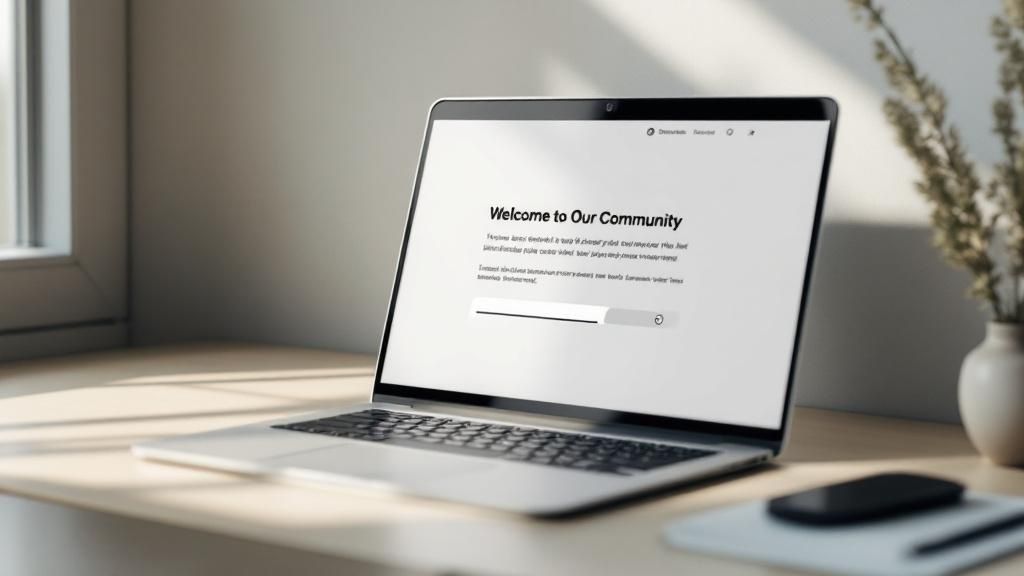
Strategic Breakdown
Companies like Slack and HubSpot have perfected this approach. For instance, Slack's onboarding sequence doesn't just welcome you; it actively teaches you how to use the platform by prompting you to create channels and invite teammates. Each email builds upon the last, providing bite-sized tutorials and highlighting key features relevant to a new user. This method transforms a simple welcome into a powerful user activation tool.
The core strategy is to deliver value immediately. Instead of just saying "thanks for signing up," these sequences show the user how to get the most out of their new relationship with you. This is a prime example of an email sequence designed to move a user from curiosity to active engagement.
Actionable Takeaways for B2B Sales
For B2B outreach, a welcome series can onboard new leads into your sales funnel, nurturing them with valuable content before a direct sales pitch.
- Email 1 (Immediate): Confirm their subscription or download. Deliver the promised asset (e.g., ebook, webinar link) and introduce your company's core value proposition in one sentence.
- Email 2 (Day 2): Share a related, high-value resource like a case study or a blog post that solves a common pain point for your target audience.
- Email 3 (Day 4): Introduce the problem your product solves in more detail. Use a "soft" call-to-action (CTA), like inviting them to a webinar or to view a short demo video.
- Email 4 (Day 7): Transition to a more direct sales approach. Offer a brief, no-obligation call to discuss their specific challenges and how you can help.
This structured approach warms up cold leads by providing genuine value first, making them more receptive to your eventual sales outreach.
2. Lead Nurturing/Educational Drip Campaign
A lead nurturing or educational drip campaign is a long-term email sequence designed to build trust and educate prospects by consistently providing valuable, relevant content. Unlike a short welcome series, this campaign unfolds over weeks or even months. Its goal is to address audience pain points, showcase your expertise, and position your solution as the logical choice, all without an aggressive sales pitch. This approach keeps your brand top-of-mind, warming up leads until they are ready to buy.
Strategic Breakdown
Companies like HubSpot and Moz excel at this by creating comprehensive educational series. For example, Moz's SEO learning sequence provides digital marketers with a structured curriculum on search engine optimization. Each email delivers a new lesson, from keyword research to link building, establishing Moz not just as a tool provider but as an authoritative educational resource.
This strategy is rooted in the "They Ask, You Answer" philosophy popularized by Marcus Sheridan. It focuses on answering every potential question your customer has through your content. By systematically addressing their challenges and objections over time, you build immense credibility and guide them naturally toward your solution. These are fantastic email sequence examples for B2B marketers who need to educate a sophisticated audience before making a sale.
Actionable Takeaways for B2B Sales
For B2B sales, an educational drip campaign is perfect for nurturing leads who are not yet sales-ready. It keeps the conversation going by providing consistent value. Learn more about how to nurture leads with Salesloop.io.
- Email 1 (Week 1): Start with a foundational topic. Share an in-depth guide or a "how-to" article that addresses a primary pain point for your target persona.
- Email 2 (Week 2): Introduce a different content format. Send a short video tutorial or an invitation to a pre-recorded webinar that builds on the first topic.
- Email 3 (Week 4): Share a success story or case study. Show, don't just tell, how a similar company overcame the challenge you've been discussing.
- Email 4 (Week 6): Offer a practical tool. This could be a checklist, a template, or a calculator that helps them apply what they've learned. Only after providing this sustained value should you introduce a soft CTA for a demo.
This patient, value-first approach builds a strong foundation of trust, making the final sales conversation a natural next step rather than an unwanted interruption.
3. Product Launch Sequence
A product launch sequence is a meticulously planned series of emails designed to build anticipation, educate prospects, and drive a surge of sales for a new product, feature, or service. This sequence creates momentum by guiding an audience from initial curiosity to purchase-ready excitement. It strategically warms up your list with teasers, behind-the-scenes content, and valuable insights before the official launch announcement, making it one of the most powerful email sequence examples for generating revenue.
This timeline visualizes the core phases of a typical product launch email sequence, from building initial excitement to post-launch engagement.
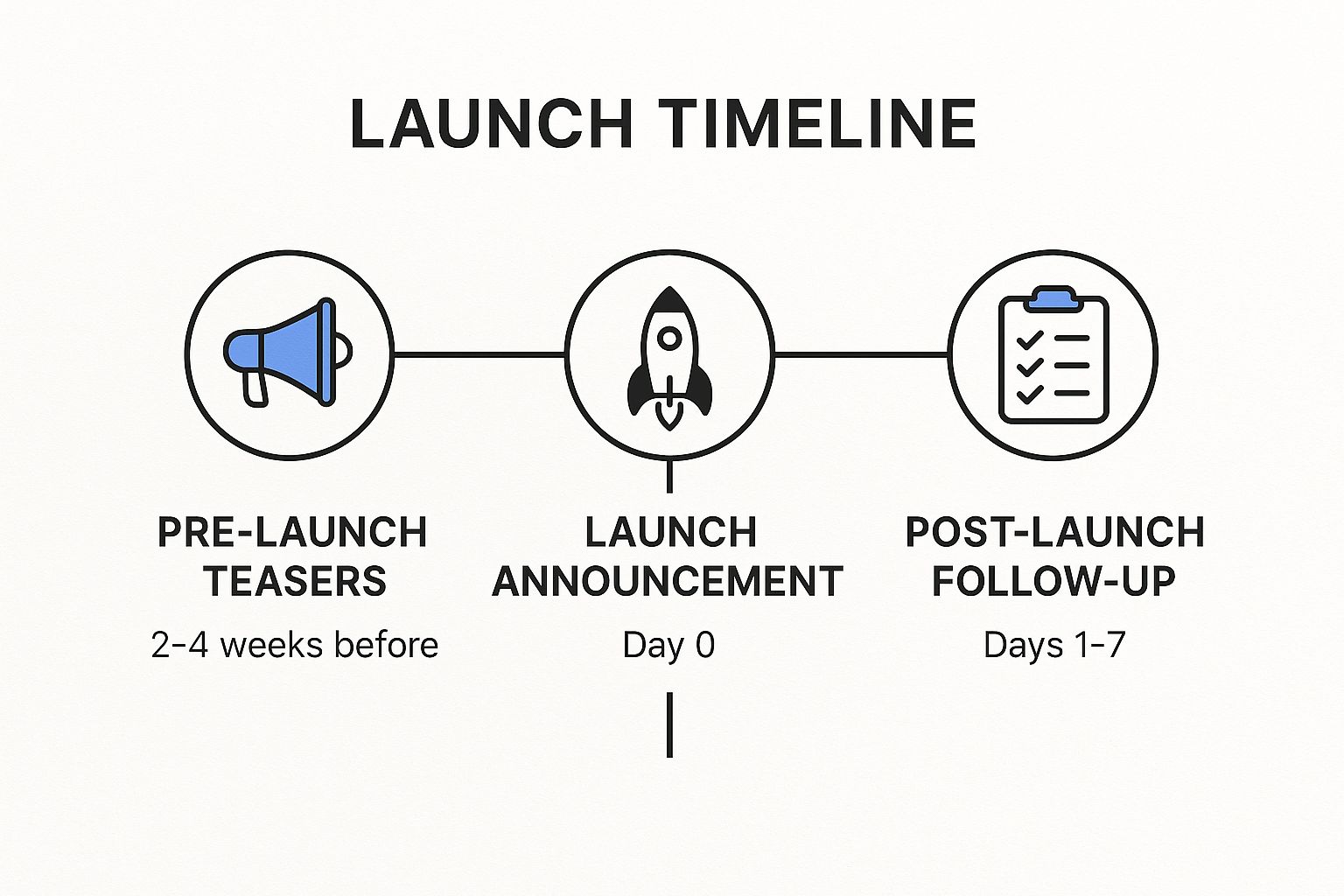
This progression shows how the communication strategy shifts from generating broad awareness to driving specific, time-sensitive action.
Strategic Breakdown
Masters of the product launch, like Jeff Walker (Product Launch Formula) and Apple, demonstrate how to turn a release into a major event. Instead of a single "it's here" email, they create a narrative over several weeks. For example, a tech company might start by sending emails that discuss the core problem their new software solves, followed by sneak peeks of the user interface, and then exclusive early-bird offers for their most engaged subscribers.
The core strategy is to transform the launch from a transaction into an experience. By building anticipation and delivering value before asking for the sale, you create a loyal following eager to buy on day one. This approach uses psychological triggers like scarcity and social proof to maximize impact. By leveraging these FOMO marketing strategies, you can create a sense of urgency that compels action.
Actionable Takeaways for B2B Sales
For B2B sales, this sequence is perfect for introducing a new software feature, a premium service tier, or a groundbreaking report.
- Email 1 (Pre-Launch – 2 Weeks Out): Announce that something new is coming. Tease the problem it solves without revealing the solution. Use storytelling to connect with a common industry pain point.
- Email 2 (Pre-Launch – 1 Week Out): Share "behind-the-scenes" content or a case study preview. Hint more strongly at the solution and invite people to join a waitlist for exclusive launch-day perks.
- Email 3 (Launch Day): Officially announce the new product or service. Clearly state the value proposition, who it's for, and provide a direct CTA to a sales or demo page. Highlight the limited-time "early bird" offer.
- Email 4 (Post-Launch – Day 3): Follow up with social proof, such as early testimonials or usage statistics. Address common questions or objections you’ve received and reiterate the expiring special offer.
4. Cart Abandonment Recovery Series
A cart abandonment recovery series is an automated email sequence sent to users who add items to their online shopping cart but leave the site without completing the purchase. This powerful B2C tactic is also highly effective in B2B contexts, such as for abandoned software trials or service sign-ups. The goal is to re-engage these high-intent prospects by reminding them of their interest, addressing potential friction points, and guiding them back to finalize the transaction. It's one of the highest ROI email sequence examples available.
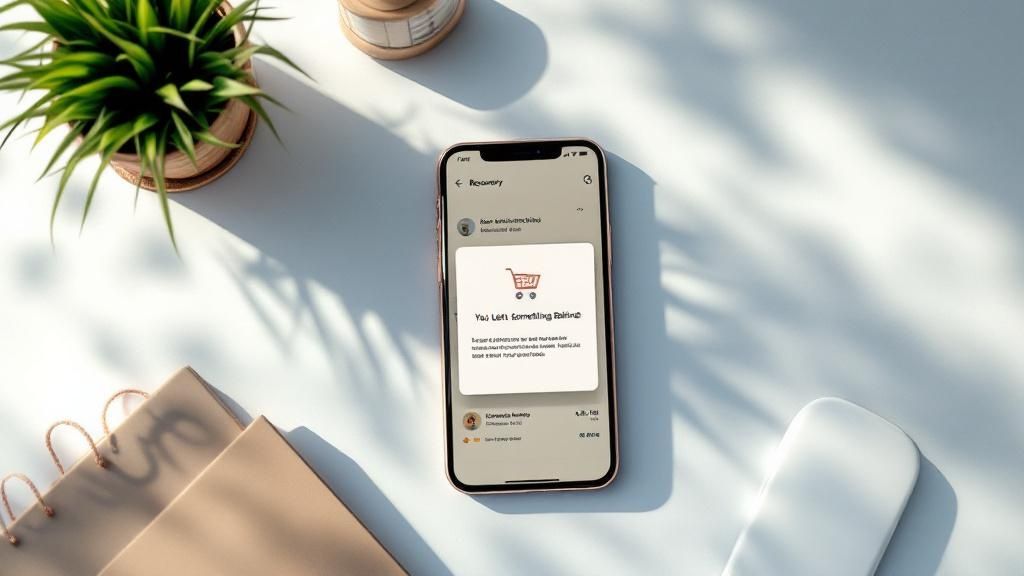
Strategic Breakdown
E-commerce giants like Amazon and ASOS have turned this into an art form. Amazon sends simple, direct reminders showcasing the exact products left behind, leveraging its massive brand trust to nudge users back. ASOS, a fashion retailer, takes a more curated approach, often framing the reminder around style inspiration or creating a sense of urgency about popular items selling out. This strategy works because it targets users at the peak of their consideration phase, making the final push to convert much easier.
The core strategy is to remove friction and reinforce value. A prospect abandons a purchase for many reasons: unexpected costs, a complicated checkout process, or simple distraction. This sequence systematically addresses these barriers, making it as easy as possible for the user to return and complete their action.
Actionable Takeaways for B2B Sales
For B2B companies, this concept applies directly to abandoned sign-ups, incomplete service bookings, or stalled software trial activations. It’s about recovering "almost-customers" who showed clear buying intent.
- Email 1 (1-3 hours): Send a simple reminder. "Did you forget something?" or "Having trouble?" Frame it as helpfulness, not a hard sell. Include a direct link back to their saved cart or sign-up page.
- Email 2 (Day 1): Address common objections. Link to an FAQ, a case study, or offer to connect them with a support specialist. Reinforce the value they are missing out on.
- Email 3 (Day 3): Create urgency or offer an incentive. This could be a limited-time offer, notice of a trial expiring, or a small discount on a first-month subscription. The goal is to prompt immediate action.
- Email 4 (Day 5): The final attempt. Use a last-chance CTA or ask for feedback on why they didn't complete the purchase. This feedback can be invaluable for optimizing your sales process.
This sequence effectively recovers leads that are on the very edge of converting, directly impacting your bottom line and preventing valuable prospects from slipping away.
5. Re-engagement/Win-back Campaign
A re-engagement or win-back campaign is a targeted email sequence designed to reconnect with inactive subscribers or lapsed customers. These contacts haven't engaged with your emails or purchased anything recently. The goal is to reignite their interest, understand why they became inactive, and either reactivate the relationship or respectfully remove them to maintain a healthy email list. This sequence is vital for maximizing customer lifetime value and preventing list decay.
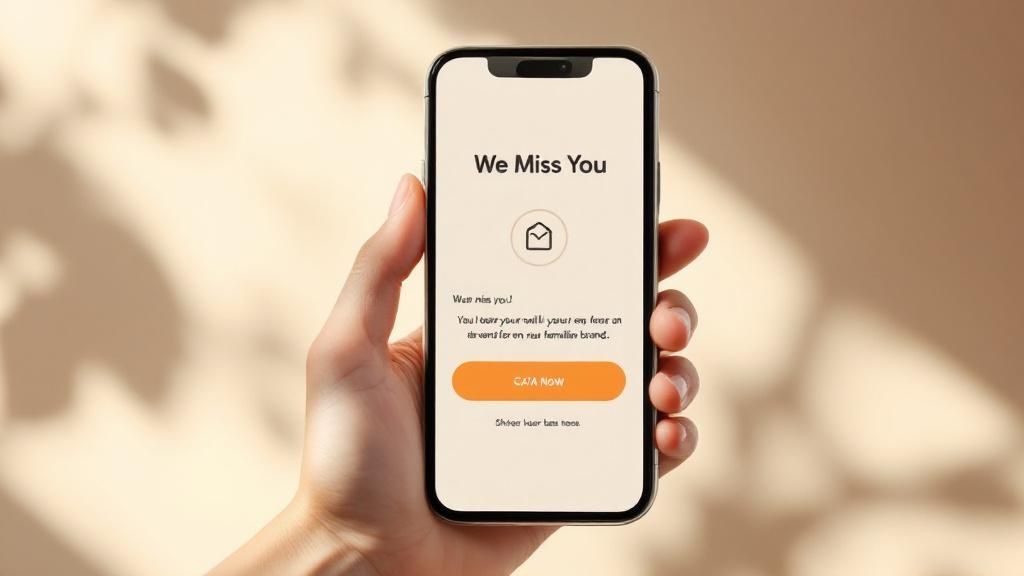
Strategic Breakdown
Companies like Spotify and Grammarly excel at this. Spotify's "We miss you" campaigns use personalized data, like listening history, to remind users of the value they're missing. Similarly, Grammarly sends helpful writing tips to inactive users, subtly reminding them of the product's benefits without being pushy. This strategy focuses on reminding the user of the initial value proposition that attracted them in the first place.
The core strategy is to acknowledge the silence and offer a compelling reason to return. It’s a delicate balance between reminding and annoying. The best win-back sequences are empathetic, often using subject lines like "Is this goodbye?" or "We miss you" to create an emotional connection. These email sequence examples demonstrate how to revive a cold contact by focusing on value and personalization.
Actionable Takeaways for B2B Sales
For B2B sales, a win-back campaign can re-engage leads that have gone cold or prospects who didn't convert after a trial. It’s a cost-effective alternative to generating entirely new leads.
- Email 1 (30 days of inactivity): Send a low-pressure check-in. Acknowledge their absence and share a new, high-value piece of content, like an industry report or a new case study relevant to their business.
- Email 2 (45 days of inactivity): Offer an exclusive incentive. This could be a limited-time discount, an extended trial, or access to a premium feature. Frame it as a special offer to welcome them back.
- Email 3 (60 days of inactivity): Ask for feedback directly. Use a simple, one-question survey: "What could we have done better?" This can provide valuable insights and sometimes re-opens a conversation.
- Email 4 (90 days of inactivity): The "breakup" email. Politely inform them you'll be removing them from your active mailing list unless they opt to stay. This cleans your list and often prompts a last-minute re-engagement from interested parties.
6. Sales/Conversion Sequence
A sales or conversion sequence is a direct, persuasive email series designed to drive a specific action, such as purchasing a product, signing up for a trial, or booking a demo. Unlike longer nurture campaigns that build awareness over time, this sequence is shorter, more intense, and laser-focused on overcoming objections and compelling a prospect to make a decision. It leverages proven direct-response copywriting techniques to move an interested lead through the final stages of the consideration process toward a final conversion.
Strategic Breakdown
This type of sequence is masterfully executed by companies like MasterClass and ClickFunnels. For instance, Ramit Sethi’s course launch sequences are a prime example. They don't just announce a product; they build a narrative over several emails. One email tells a relatable story, another addresses a common financial fear ("Is it too expensive?"), and a subsequent one shares a powerful student success story, all culminating in a clear, urgent call-to-action with a specific deadline.
The core strategy is to systematically dismantle a prospect's purchasing anxiety. Each email is a carefully placed domino designed to knock down a specific barrier, whether it's price, trust, or timing. These email sequence examples show that by leading with value, addressing objections head-on, and using social proof, you can create powerful momentum that leads directly to a sale.
Actionable Takeaways for B2B Sales
For B2B sales, this sequence is perfect for converting warm leads who have shown interest (like attending a webinar) into paying customers. This approach is a key part of an effective sales cadence.
- Email 1 (Day 1): Lead with value. Reference their previous engagement (e.g., "Thanks for attending our webinar") and offer an exclusive, related resource that reinforces the problem your solution solves.
- Email 2 (Day 3): Directly address a primary objection. Use a customer testimonial or mini case study to prove your ROI and handle concerns about cost or implementation.
- Email 3 (Day 5): Introduce scarcity or urgency. Present a time-sensitive offer, such as bonus onboarding support for signing up this week or a special introductory price.
- Email 4 (Day 7): The final call. Clearly state the deadline, summarize the core value, and use a direct, firm CTA like "Book Your Onboarding Call" or "Activate Your Account Now."
This focused approach is highly effective for closing deals with prospects who are already near the bottom of the funnel. You can learn more about building these targeted outreach flows in our guide to sales cadences.
7. Event/Webinar Promotion Sequence
An event or webinar promotion sequence is a time-sensitive campaign designed to build anticipation and maximize attendance for a live or virtual event. This sequence moves beyond a simple invitation; it's a strategic series of communications that educates prospects on the event's value, handles logistical reminders, and drives registrations. Its main purpose is to convert awareness into attendance by creating a sense of urgency and highlighting the tangible benefits for participants.
Strategic Breakdown
Companies like HubSpot (for their INBOUND conference) and Social Media Examiner have mastered this type of email sequence. They don't just announce an event; they create a multi-week narrative around it. The sequence often starts with a "save the date," followed by emails revealing speakers, session topics, and exclusive bonuses for early registrants. This builds momentum and gives prospects multiple reasons to sign up over time.
The core strategy is to focus on the transformation the attendee will experience. Instead of listing features, these emails answer the question: "What problem will this event solve for me?" By showcasing value and creating urgency with countdowns and registration deadlines, this sequence effectively turns passive interest into active participation.
Actionable Takeaways for B2B Sales
For B2B sales, a webinar is a powerful tool for generating qualified leads. This sequence ensures you get the right people to show up. For those looking to streamline the logistics of event planning, understanding key event management software features can complement your promotional email efforts.
- Email 1 (2 Weeks Out): Announce the webinar. Focus on the core problem you will solve and introduce the key speaker. The CTA is to "Register Now & Save Your Spot."
- Email 2 (1 Week Out): Share a sneak peek or a "what you'll learn" bulleted list. Add social proof, like a testimonial from a past event attendee or a compelling statistic.
- Email 3 (3 Days Out): First reminder email. Create urgency by mentioning limited spots or asking a provocative question related to the webinar's topic. Include a calendar link (Google, Outlook) for easy scheduling.
- Email 4 (Event Day): "Starting Soon" reminder. Send this 1 hour before the event begins with a clear, prominent link to join.
- Email 5 (Post-Event): Follow-up with a link to the recording for all registrants (both attendees and no-shows). For attendees, offer a next step like a demo; for no-shows, use the replay to re-engage them.
This structured promotional sequence is a prime example of how to build an audience and turn a one-time event into a significant lead generation opportunity.
7 Key Email Sequence Examples Compared
| Email Sequence Type | Implementation Complexity 🔄 | Resource Requirements ⚡ | Expected Outcomes 📊 | Ideal Use Cases 💡 | Key Advantages ⭐ |
|---|---|---|---|---|---|
| Welcome/Onboarding Email Series | Moderate – Multiple emails, content creation upfront | Moderate – Content creation & updates needed | Establishes relationships, reduces unsubscribes, increases engagement | New subscribers/customers introduction | Builds strong first impression, sets future foundation |
| Lead Nurturing/Educational Drip Campaign | High – Long-term, segmented, content-heavy | High – Substantial ongoing content required | Builds trust and authority, higher conversion over time | Prospects in long sales cycles seeking education | Positions as expert, keeps brand top-of-mind |
| Product Launch Sequence | High – Multi-phase, cross-channel coordination | High – Coordination, storytelling, multiple assets | Creates buzz, drives concentrated sales, builds urgency | New product/service launches | Maximizes launch impact, story-driven marketing |
| Cart Abandonment Recovery Series | Moderate – Automated triggers, personalization | Moderate – Email automation platform required | Recovers lost sales, provides behavioral insights | E-commerce customers abandoning carts | High ROI, scalable, personalized sales recovery |
| Re-engagement/Win-back Campaign | Moderate – Segmentation & timing critical | Moderate – Targeted messaging and offers | Recovers inactive customers, improves list quality | Inactive or lapsed subscribers/customers | Improves deliverability, reactivates customers |
| Sales/Conversion Sequence | Moderate – Short, persuasive, objection handling | Moderate – Requires copywriting & segmentation | Drives direct sales, measurable ROI, scalable sales | Warm prospects ready for close | Clear CTA, systematic objection handling |
| Event/Webinar Promotion Sequence | High – Time-sensitive multi-phase campaign | High – Coordination and preparation needed | Maximizes event attendance, generates qualified leads | Live events, webinars, virtual summits | Creates focused attention, post-event engagement |
From Examples to Execution: Activating Your Email Strategy
We have journeyed through a comprehensive collection of powerful B2B email sequence examples, moving from the crucial first touchpoint of a welcome series to the strategic finesse of a win-back campaign. The key lesson is clear: effective email outreach is not about isolated messages. It's about building a structured, automated conversation that guides a prospect through their unique buying journey with precision and value.
The templates and breakdowns provided in this guide serve as your strategic playbook. They demonstrate that behind every successful sequence lies a deep understanding of the audience's needs, a commitment to personalization, and a clear, measurable objective for every single email sent. This is the difference between sending emails and executing a true email strategy.
Your Blueprint for Action
Moving from inspiration to implementation is the most critical step. Don't feel pressured to overhaul your entire outreach system overnight. Instead, focus on incremental, high-impact changes.
Here’s how to start:
- Identify Your Biggest Opportunity: Analyze your sales funnel. Where are you losing the most prospects? Is it converting new leads into meetings? Is it re-engaging promising contacts who went cold? Pinpoint the single biggest leak.
- Select a Corresponding Framework: Choose one of the email sequence examples from this article that directly addresses your identified opportunity. Use the provided structure as your foundation, not a rigid script.
- Adapt and Personalize: Infuse the template with your company’s unique voice, value proposition, and specific customer pain points. The true power of these sequences is unlocked through authentic personalization that resonates with your target persona.
- Implement and Measure: Build your sequence using a platform designed for this purpose. Track key metrics like open rates, click-through rates, and reply rates to understand what's working and where you need to iterate.
The Strategic Advantage of Automated Sequences
Mastering the art of the email sequence provides a sustainable competitive advantage. It allows you to build relationships, educate prospects, and drive conversions at scale, freeing up your valuable time to focus on closing deals and serving customers. It transforms your outreach from a manual, time-consuming task into a predictable, automated engine for pipeline growth.
The strategic principles we’ve covered, from timing and segmentation to value-driven messaging, are the pillars of modern B2B sales. By applying these concepts, you are not just improving your email game; you are fundamentally enhancing your ability to connect with and convert your ideal customers in a crowded digital landscape.
Ready to turn these powerful email sequence examples into a reality? Salesloop.io provides the intuitive platform you need to build, automate, and analyze multi-step outreach campaigns with ease. Stop sending one-off emails and start building an automated sales engine today by visiting Salesloop.io.



